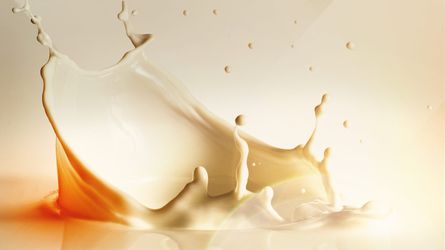
Food & Beverage Industry
Use LEWA pumps and system solutions for your homogenization processes in the food and beverage industry. Ask our experts for more information!
Read more
The advantages of the LEWA ecodos pumps in edible oil refining:
Because of the outstanding features of the LEWA ecodos in systems in the edible oil industry, other pump types are increasingly being replaced.
LEWA is a one of the leading producers of hygienic compatible designs of pumps and systems and can supply accordingly certified products:
Process description
Pressing or extraction are generally used for the production of oil from seeds and fruit.
Oil that can be extracted without external addition of heat by pressing is called cold-pressed oil. This oil may not be refined. These oils are ready for use after filtering and filling.
However, the higher the temperature, the higher the oil yield. This leads to pressing under the addition of heat.
Using temperatures of >100°C is referred to as "hot pressing". Raw oil extracted in this manner must absolutely undergo refining.
This term is understood as a combination of physical and chemical processes, to remove undesirable and environmentally related components, such as
from the raw oil.
Essentially, classical refining consists of the following operational steps:
Beside this classical chemical refining, physical refining is also significant. It is technically more complex, but only has two combined process steps, the degumming and prebleaching or deacidification.
The major advantages are its lower environmental impact and reduction of refining losses. The disadvantage is that a significantly improved degumming is required, depending on the type of oil.
De-lecithinization
A special form of degumming to extract lecithin.
De-lecithinization is exclusively used for special types of oil, e.g., soy oil, in which the targeted processing is profitable.
Degumming
Precipitation of the hydratable phosphatides using the addition of water and heat. The remaining, non-hydratable phosphatides are dissolved by the addition of acids. Phosphoric acid or citric acid are the preferred additives. By heating to about 90°C, the protein and carbohydrate compounds, which would cloud the oil break down. Degumming is completed by decanting or separating.
Deacidification
Through the addition of caustic soda, the fatty acids are removed, which negatively affects the taste and shelf life. The resulting soap is suctioned off or removed in centrifuges.
Bleaching
In this step the coloring is removed, along with hydroperoxides and heavy metals.
Deodorization (vaporizing)
The highest temperatures in the entire refining process occur here. At around 240°C, undesirable smells and flavors are removed. Volatile compounds (including traces of hexane) and pesticides are also removed.